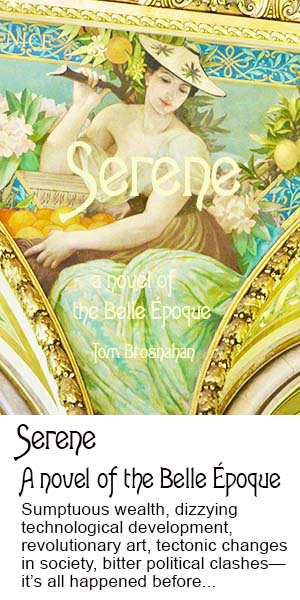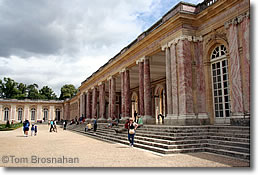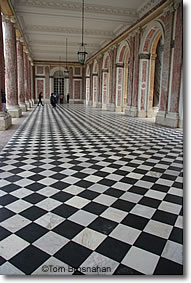 |
Grand Trianon, Versailles, France | |
|
Built for Louis XIV in 1687, this little palace provided a get-away for the King and his family.
|
||
|
|
||
|
|
|
It's tough being a king and living in a palace, and sometimes life at the Château de Versailles was just too busy and hectic. Louis XIV wanted a place to get away to, just a small palace for him and his family when the formality and social demands of court life were too much. So he got the famous architect Jules Hardouin-Mansart to create the Grand Trianon, a beautifully proportioned building of pink marble. With its many columns and well-proportioned windows, the Grand Trianon is both beautiful and charming. As was his custom, Louis XIV was very involved in the design of the building. The Versailles web site describes the Grand Trianon as "radiating a sense of cosiness, sweetness, and grandeur." Certainly compared to the Grand Château it is small and well-proportioned, but for me it evokes more a sense of elegance than cosiness. The Grand Trianon is also known for its elegant and ever-changing gardens, with vast numbers of flowering plants and shrubs. Visits to the Grand Trianon include the king's apartments, with their elaborate furnishings, chandeliers, and works of art. In addition to Louis XIV and his family, others who enjoyed the Grand Trianon include Napoléon Bonaparte and the Empress Marie-Louise, and Charles de Gaulle, President of France from 1959 to 1969. De Gaulle had it restored as a guest house for French presidents. Marie-Antoinette spent some time at the Grand Trianon, but she preferred the more modest Petit Trianon, or her little hameau, a recreation of an Austrian village. Although it is some distance from the Grand Château (about a half hour walk, depending on your pace and how many side trips you take; or you can take the petit train), the Grand Trianon is well worth a visit, for its beautiful architecture, ornate furnishings, and charming gardens. Because it's a bit out of the way, it also tends to be less crowded than the Grand Château, which adds to its charm.
|
|
Above, façade
of the Grand Trianon.
 |


